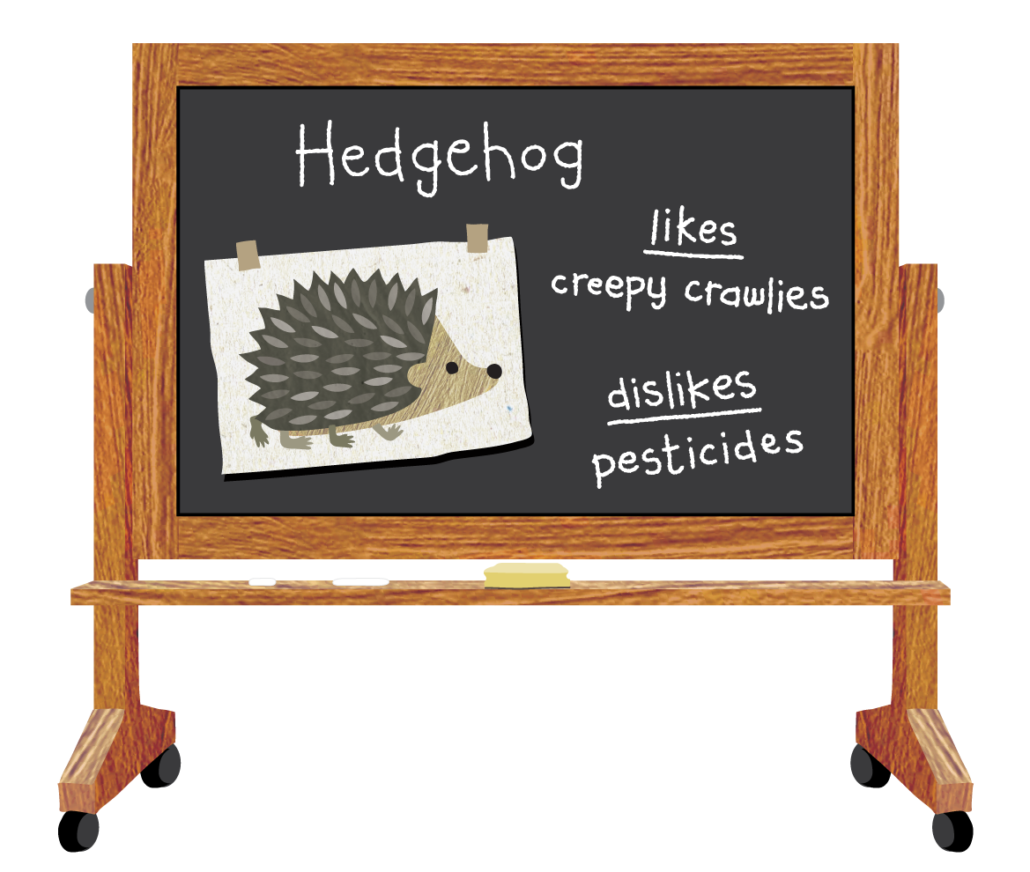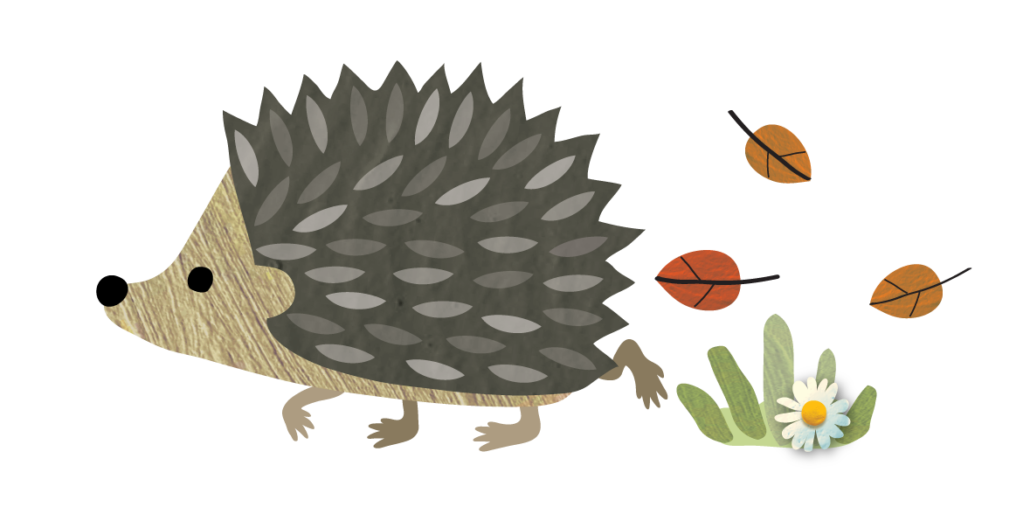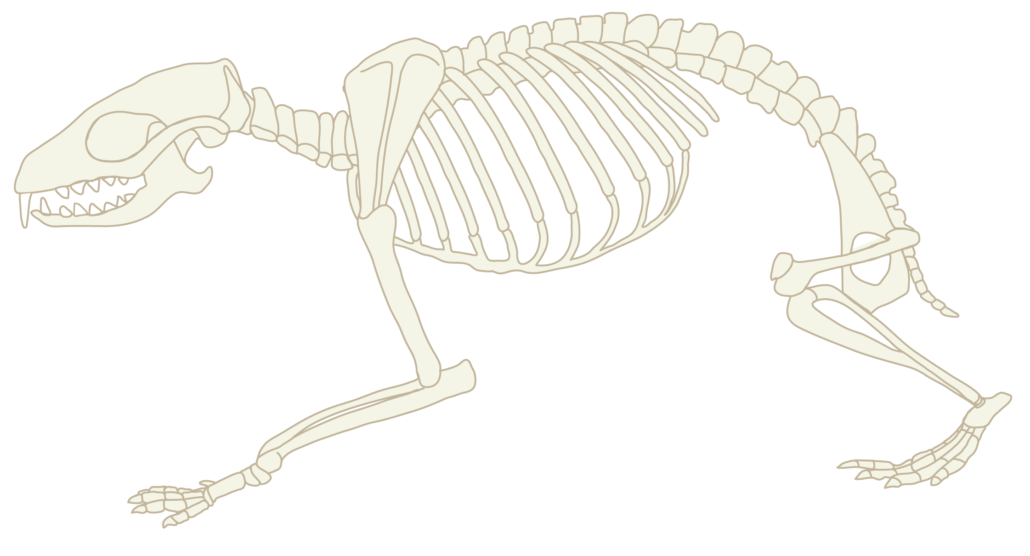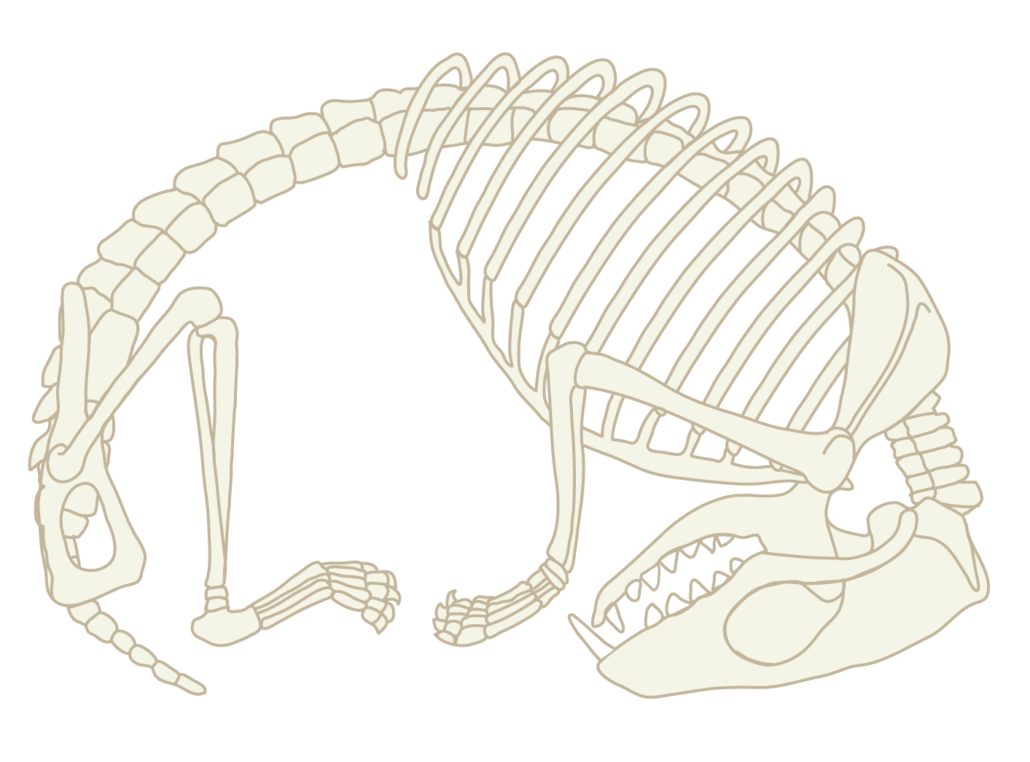
Where did the hedgehog come from?
The hedgehog comes from an ancient family and fossils suggest that hedgehog-like creatures have been on the earth for about 15 million years. The modern hedgehog has no close relatives amongst other mammals although it may have distant links with moles and shrews. It belongs to a family all of its own and has developed along a separate evolutionary line for millions of years. The family has around 18 species, which includes two in Europe and others found in Africa, the Middle East, Central and South Asia, Mongolia and China. Our British hedgehog is the same species which occurs in most of the continent of Europe and is called Erinaceus europaeus. It has been introduced to New Zealand by humans.
What does a hedgehog look like?

What’s on the outside?
Of course the hedgehog is characterised by its spines. These are modified hairs, about 2-3cms (1”) long, which cover the back of its head and body. As a hedgehog grows the number of its spines increases until when adult it has between 5000 and 7000. By this time it will be somewhere between 20-30cms (8-12”) in length but its tail will be less than 2-3cms (1”) long.
Whole Spine

And what about the inside?
Under the prickles the hedgehog has a remarkable system of muscles which work to raise and lower its spines. When it is frightened it will tighten the muscles around its flanks and curl up. Its soft parts are completely guarded by a defensive cover of prickles which few enemies can penetrate. But what about its bones? Have a look at the image of a hedgehog’s skeleton below –

Scientists have discovered very little unusual about the hedgehog’s skeleton except the shortness of the neck. This probably helps it to roll up into a compact ball more easily. The hedgehog’s peculiar ability to roll itself into a ball, and to stay like that for a long time (especially during hibernation), is made possible by the powerful muscle which covers its back like a cape. A look at the X-ray style picture of a rolled-up hedgehog below will make it clear why this self-defence mechanism means that it has fewer enemies than any other mammal of similar proportions.
X-ray view of rolled-up hedgehog

More facts about hedgehogs
- They have relatively long legs – about 10cms (4”) – and these enable them to run as fast as we can walk.
- Their front feet are shorter and broader than their back ones.
- The claws on their powerful front feet are particularly useful for digging.
- Each night (when not hibernating) hedgehogs must forage in search of food and will routinely travel between 1-3kms (up to 2 miles).
- They have small bright eyes but cannot see very well. At night they will use their excellent sense of smell and hearing to guide them.
- Their weight will be largely determined by the food they get; adults may weigh from about 800g to well over a kilogram, but most one-year olds will weigh between 450-680g (1-1½lbs).
- Self-anointing is an activity only hedgehogs do. It seems to be connected with strange smells or tastes which cause them to produce large quantities of frothy saliva. They then spread the foam over their spines by flicking it with their tongue.
- If a young hedgehog survives its early life in the nest and then its first hibernation, it can expect to live for 4 or 5 years longer. By this time it will be getting old but might live to the age of ten. Generally, they lead solitary lives and tend to go out of their way to avoid other hedgehogs, except during the mating season.
- Like most mammals the hedgehog has a characteristic smell, and this will usually warn other hedgehogs to keep out of the way.
- In the mating season the male may be attracted by the different smell of the female and commence a rather prolonged and noisy courtship with her. Hedgehogs do not pair bond and the female raises her young unaided by the male.
- Litters of young, called hoglets, are generally born from May to September and average about 2 to 6 in number.
- When the hoglets are about 6-8 weeks old they leave the nest and wander off on their own – they weigh around 250g (9oz) at this stage.







